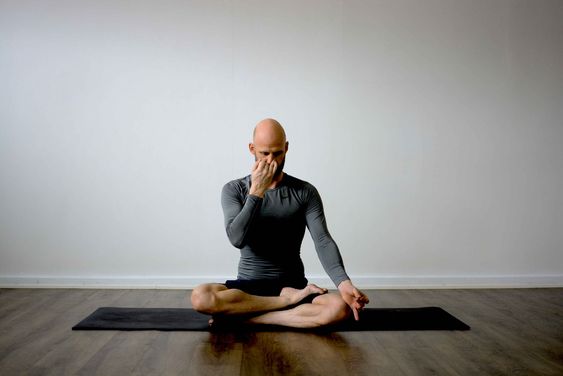
Written by Eugenia K.
Breathwork: A Pathway to Healing from Trauma
Trauma, in its essence, is an emotional response to a deeply distressing or disturbing event. It is not just a psychological wound but also a physical and spiritual one that profoundly affects the mind, body, and actions.
My journey through trauma began in 2020, a year that stripped me of almost all my family members, leaving only my brother and me to grapple with the aftermath. The loss of my loved ones was a profound shock that reverberated through every aspect of my being. Trauma leaves an indelible mark, manifesting in various physical and psychological ways. For me, the symptoms were pervasive and debilitating. I experienced chronic fatigue, tension headaches, and a constant, gnawing pain in my chest. These physical manifestations were my body’s way of holding onto the unresolved grief and shock. I often felt a tightness in my muscles, particularly around my neck and shoulders, as if my body was bracing itself against an unseen threat.
Emotionally and mentally, trauma manifested as relentless anxiety, depression, and overwhelming sadness. My mind was a battleground of intrusive thoughts and flashbacks, replaying the moments of loss over and over. I struggled with insomnia, and when I did sleep, I was plagued by nightmares. Simple tasks became insurmountable challenges. Having a shower and going to work became a deliberate act that took all my energy to complete. I felt misunderstood, incomplete, broken, and alone.
Despite these experiences, there is an underlying beauty that lives beneath the chaos of the world crumbling down. It is the opportunity to find a different way, to connect, to rediscover yourself, and to pick up the pieces to build a new self. In the depths of my grief, traditional therapy provided some support, but I felt an innate need for something more holistic, something that could address the physical, emotional, and spiritual dimensions of my trauma. Through this search, I discovered a profound modality—a practice that uses conscious breathing techniques to promote healing and transformation.

What is Breathwork?
Breathwork offers a pathway to release the trauma stored in the body and mind, facilitating profound healing and personal growth. It helps by accessing altered states of consciousness, allowing you to heal at a deeper level rather than just a conscious one. Through specific breathing techniques, it is possible to tap into the subconscious mind, where deeply buried emotions and trauma reside. This process bypasses the analytical mind, enabling you to confront and release the emotional pain and negative patterns that traditional therapy might not reach. By entering these altered states, you can facilitate profound emotional and psychological healing, fostering a deeper sense of inner peace and transformation.
Jonathan from Sydney captures this essence well, stating:
"Breathwork helps me to reconnect with my inner compass, regaining trust within myself, and building the capacity for awareness and understanding of my internal world. Inevitably, this flows into my external world.”
How Breathwork Works:
- Regulating the Nervous System: Trauma often disrupts our natural breathing rhythm, keeping us in a perpetual state of stress and anxiety. Breathwork, through techniques like deep diaphragmatic breathing, activates the parasympathetic nervous system, promoting relaxation and reducing stress hormone levels.
- Releasing Trapped Emotions: Unlike talk therapy, which engages the cognitive mind, breathwork enables the release of emotional pain that may be deeply buried. This process fosters emotional liberation, gradually loosening trauma's grip on our psyche and physical well-being.
- Improving Emotional Regulation: By cultivating mindfulness and self-awareness through breath awareness, individuals gain greater control over overwhelming emotions. This heightened awareness supports a more stable emotional baseline over time.
Techniques and Styles to Target Trauma:
Breathing techniques encompass a variety of methods that can effectively alter the rhythm of our breath. Despite their diversity, what's intriguing is their accessibility and simplicity. We all breathe naturally, making these techniques approachable and easy to integrate into daily life with practice and commitment. These methods vary in intensity, focus, and approach, providing individuals with multiple avenues to explore their inner landscapes, release stored trauma, and gain deeper awareness and physical relaxation. Some mainstream techniques include:
Holotropic Breathwork:
-
Focus: Emotional release and subconscious exploration.
-
Technique: Intense breathing with music to induce altered consciousness.
-
Benefits: Releases buried emotions and trauma for deep healing.
-
Focus: Physical resilience and mental clarity.
-
Technique: Deep breathing, cold exposure, and meditation.
-
Benefits: Increases oxygen, reduces inflammation, and lowers anxiety.
Transformational Breath:
-
Focus: Healing of mind, body, and spirit.
-
Technique: Diaphragmatic breathing with movement, sound, and affirmations.
-
Benefits: Clears energy blockages, promotes emotional release, and fosters relaxation.
Rebirthing Breathwork:
-
Focus: Healing from early life trauma.
-
Technique: Continuous circular breathing.
-
Benefits: Releases unresolved childhood traumas and reconnects with the inner child.
Kumbhaka:
-
Kumbhaka, commonly known as breath retention, is a profound practice within breathwork where one holds their breath after inhalation or exhalation. This technique is not only integral to various breathing exercises but also enhances their benefits significantly by manipulating oxygen and carbon dioxide levels in the body.
-
Benefits: Enhances physical and mental well-being, promotes relaxation, and contributes to cognitive function and emotional well-being.
Practical Techniques for Beginners:
For those beginning their journey with breathwork, simple exercises can provide a foundation for deeper exploration:
1. Kapalabhati (Skull Shining Breath):
-
Purpose: Cleansing and energizing the mind, particularly the frontal lobe.
-
Technique: Rapid, forceful exhalations followed by passive inhalation.
-
Benefits: Increases clarity, improves focus, and energizes the body.
2. Alternate Nostril Breathing (Nadi Shodhana):
-
Purpose: Balancing the mind and clearing blocked energy channels.
-
Technique: Sequentially inhaling and exhaling through alternate nostrils.
-
Benefits: Promotes balance, reduces stress, and enhances mental clarity.
3. Kumbhaka Practice (Breath Retention):
-
Purpose: Enhancing breath control and promoting relaxation.
-
Technique: Holding the breath after inhalation or exhalation.
-
Benefits: Improves oxygen utilization, fosters relaxation, and supports cognitive function.
The Importance of Guidance and Safety:
While breathwork holds profound potential for healing, safety and guidance are paramount considerations, particularly for those navigating trauma or specific medical conditions. Practicing under the supervision of a certified facilitator ensures a structured and safe approach, tailored to individual needs:
-
Ensuring a Safe Environment: Personalized support and risk management.
-
Considerations for Certain Conditions: Awareness of medical and psychological considerations.
-
Support for Trauma Survivors: Sensitive and trauma-informed approach.
-
Professional Training and Expertise: Certification and ethical standards.
What to Expect in a 60-Minute Breathwork Session:
A structured breathwork session typically includes setting intentions, guided breathwork techniques, self-exploration, integration, and reflection. Each session is designed to foster healing and personal growth, providing a safe space for individuals to reconnect with themselves and navigate their healing journey.
Embracing Healing and Wholeness:
In essence, breathwork transcends conventional therapy by addressing trauma at its core—physically, emotionally, and spiritually. It provides a pathway to reclaiming inner peace and resilience, offering tools to navigate the complexities of healing. As individuals engage with breathwork, they embark on a journey that is nonlinear and deeply personal, uncovering layers of healing and growth over time.
It underscores the remarkable resilience of the human spirit, empowering you to reconnect with your inner self and cultivate a renewed sense of purpose and empowerment. Through conscious breathing, I've not only healed emotional wounds but also rediscovered my innate strength, enabling me to rebuild and thrive.

About the Author
Eugenia K.
Eugenia is dedicated to providing compassionate and comprehensive support to individuals seeking a life aligned with their deepest desires. She is a mental health practitioner, she has years of experience working in the industry with children and offering yoga and meditation to adults. With extensive personal experience and a diverse range of tools and knowledge, she employs a holistic approach, using evidence-based techniques and ancient healing processes, to help guide and empower people through their challenges.
See Profile




